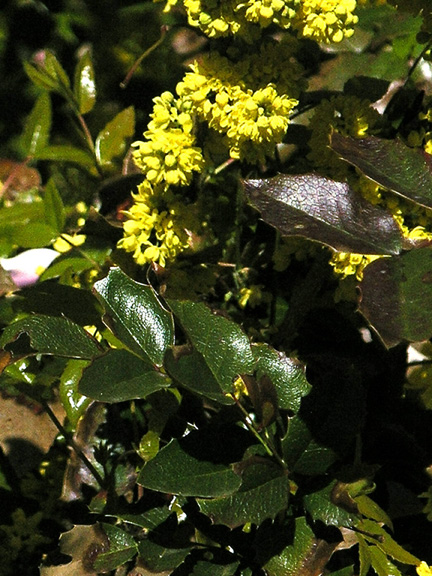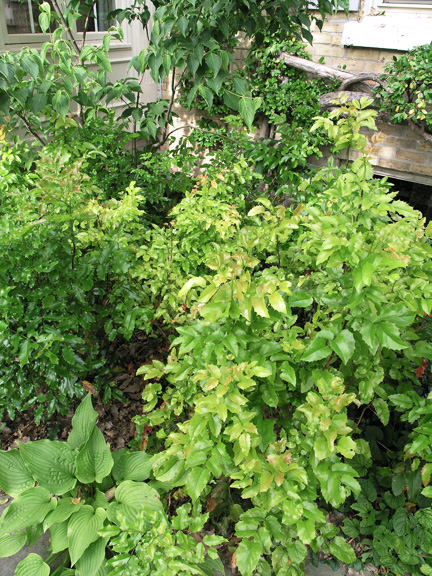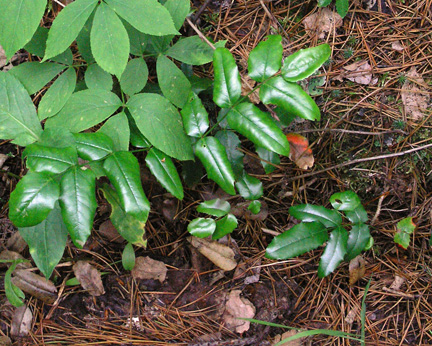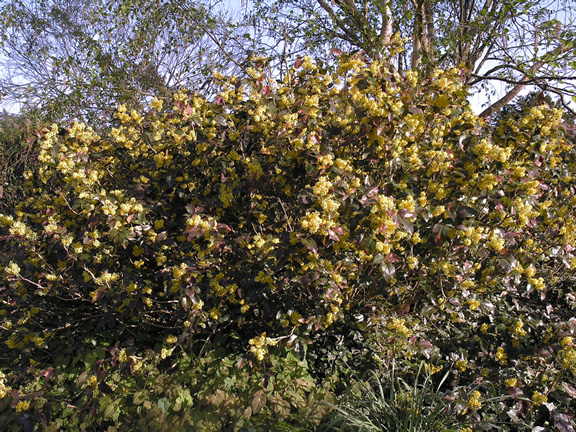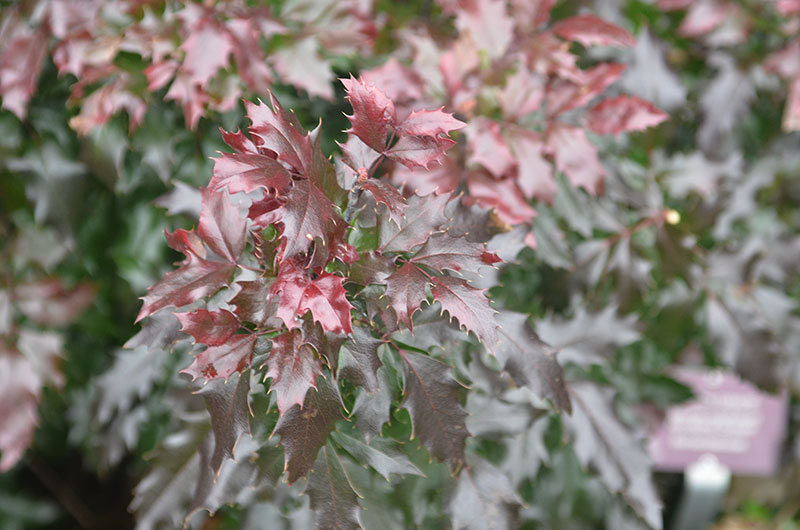| ID Characteristic | Inner yellow bark, evergreen, pinnately compound leaves, bright yellow flowers in clusters and blue-black fruit. |
| Landscape | Used as a foundation plant, shrub border and as a specimen. Desirable for spring bloom, high quality summer foliage and blue fruit in autumn. |
| Pests | Leaf rusts, leaf spots, barberry aphid, scale, leaf scorch and whitefly. |
| Flower/Leaf Bud Description | Rather small, except for the terminal which is ovoid with half-a-dozen exposed scales. |
| Leaf Description | Compound pinnate, alternate, evergreen and 16 - 30 cm long. Lustrous dark green above, extremely stiff and leathery, rarely dull and usually turns purple in the winter. |
| Flower Description | Borne in fascicled, erect, 5 - 7.5 cm long and are bright yellow in colour. |
| Fruit Description | True berry, rounded and blue-black in colour. |
| Colour Description | Leaves are reddish bronze when unfolding, changing to light, glossy yellow-green and finally a lustrous dark green in the summer. Leaves are purplish bronze in autumn and winter. |
